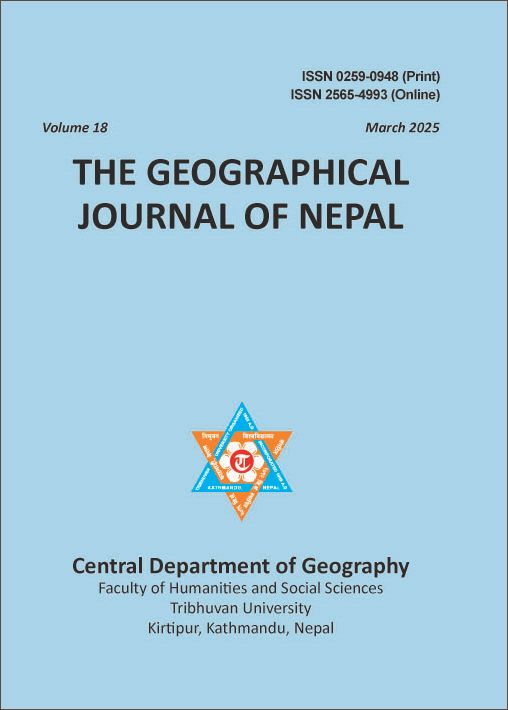Hydrological Modeling of Extreme Rainfall Events in the Gandaki River Basin Using HEC-HMS
DOI:
https://doi.org/10.3126/gjn.v18i1.77067Keywords:
simulation, modeling, distributed, geometry, Narayani basin, routingAbstract
Hydrological modeling is categorized into lumped, semi-distributed, and distributed models, and with the semi-distributed model dividing a basin into sub-basins to estimate runoff and compute stream flow at the outlet. This study applies the semi-distributed HEC-HMS model to assess the impact of channel geometry on hydrological modeling in the Narayani River Basin, Nepal. Different channel geometries were simulated to analyze their effects on stream flow. Results indicate that the trapezoidal channel section provides the most accurate representation, closely matching observed discharge. The model was calibrated using 2004-2005 rainfall-runoff data and validated with 2006 data. The findings suggest that trapezoidal channels are the most effective for flood forecasting and continuous simulation. Future research should incorporate high-resolution data sets to enhance accuracy and improve model performance.
Downloads
Downloads
Published
How to Cite
Issue
Section
License
Copyright (c) 2025 The Author(s)

This work is licensed under a Creative Commons Attribution 4.0 International License.
© Authors




